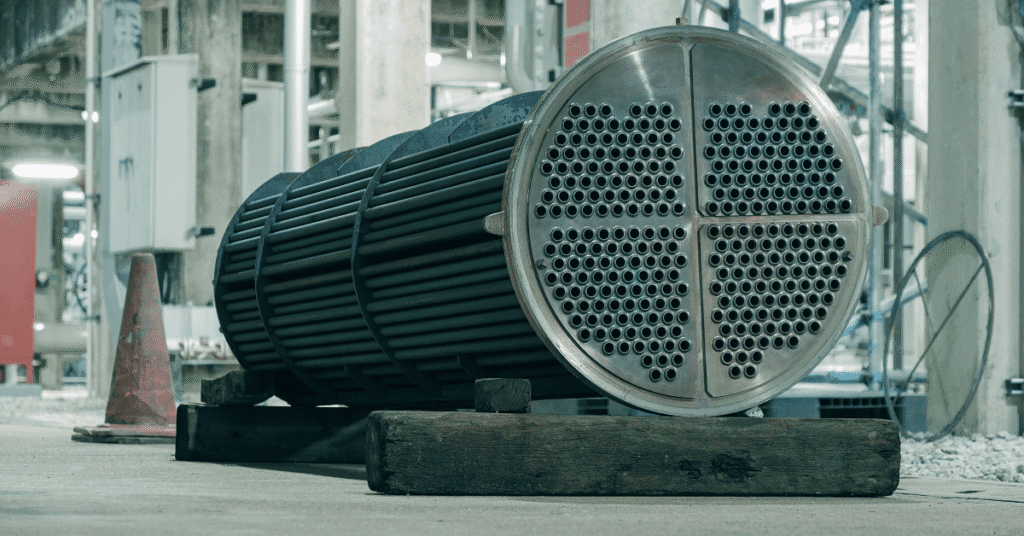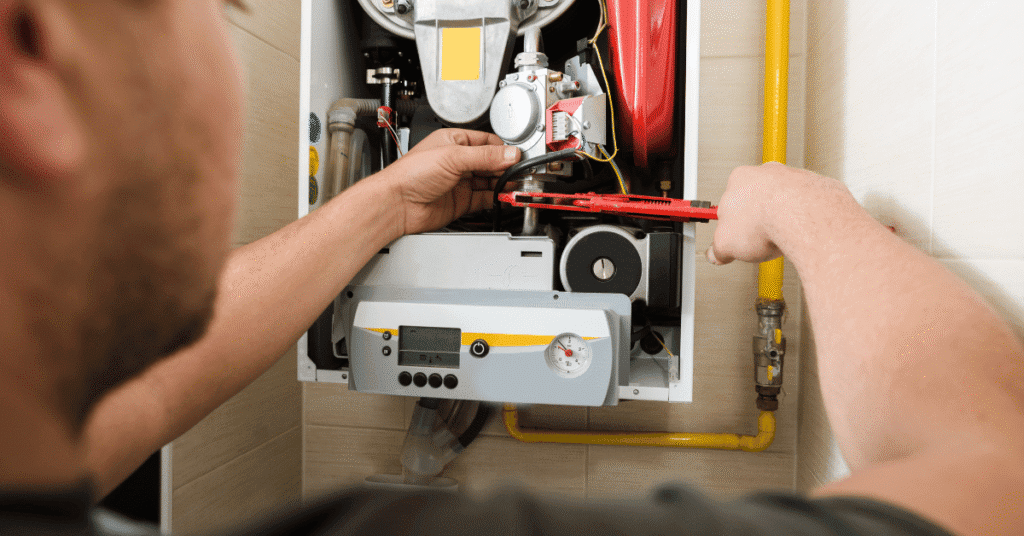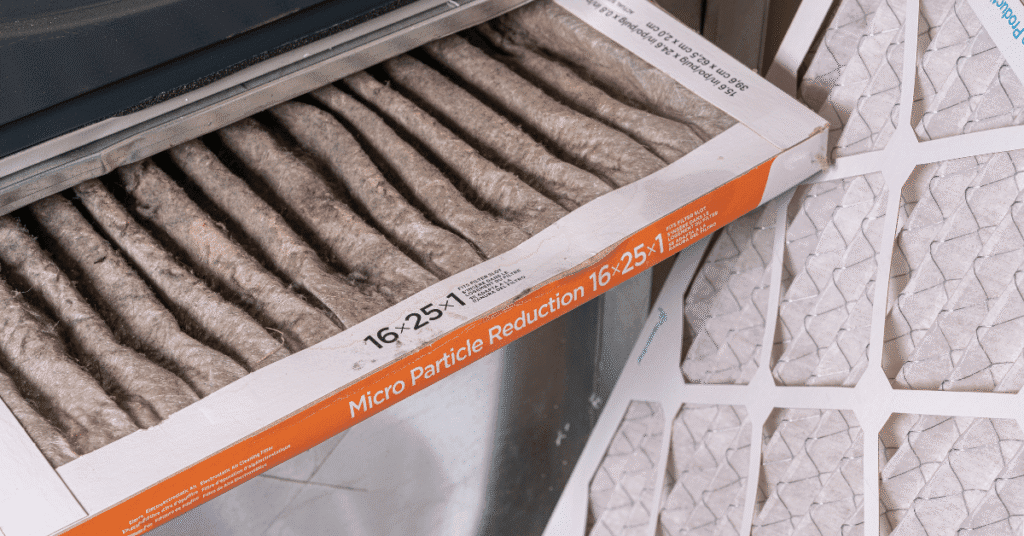Every furnace flame color tells a story, and paying attention to the flame color is one of the best ways to know if your heating system is operating safely. The color of your furnace flame is more than just appearance it reflects the combustion process, energy efficiency, and whether your furnace is burning fuel properly.
For homeowners in Oklahoma City and beyond, watching the flame pattern can help you spot issues before they become serious. Changes in furnace flame color can mean anything from harmless dust burning off to dangerous carbon monoxide risks. Knowing what different furnace flame colors mean will help you protect your home, improve energy efficiency, and avoid costly furnace repair or even emergency replacement.
Why Furnace Flame Color Matters
The furnace flame is a direct indicator of how well your heating system is working. A steady blue flame shows complete combustion, which means fuel is burning cleanly, reducing wasted gas and lowering your energy bill.
Abnormal colors like a yellow flame, orange furnace flame, or even a green flame often point to incomplete combustion, poor airflow, or issues with the furnace burner. Ignoring these signals can result in soot buildup, inefficient heating, or even the production of carbon monoxide, a colorless, odorless, tasteless gas that can cause serious harm.
The Ideal Furnace Flame Color: Blue
The safest and most efficient furnace flame color is blue or almost completely blue. A roaring blue flame means the furnace is combusting fuel with efficient combustion. This ensures:
- The furnace burner is clean.
- Proper air and gas mixture is being maintained.
- The furnace is operating safely with optimal performance.
A blue furnace flame with a small light blue triangle or slight tinge of yellow when igniting is normal, but the flame should quickly stabilize into a steady blue color.
Yellow or Orange Furnace Flame – Warning Signs
A yellow flame or orange flame indicates incomplete combustion, often due to dirt, soot, or blocked airflow. This condition may lead to the production of carbon monoxide inside the home.
Common causes include:
- Clogged burners that need cleaning
- Poor ventilation or restricted airflow
- Incorrect air and gas mixture
If the flame is yellow or orange, turn off the furnace immediately and contact a licensed HVAC technician for inspection. This is a clear safety risk that requires prompt furnace repair.

Green Flame or Red Flame – Serious Contamination
- Green flame: Usually caused by metals such as copper or chemical contamination entering the combustion process. This can impact indoor air quality and indicates that your furnace needs a professional inspection.
- Red flame: Signals rust, corrosion, or debris inside the furnace burner. Left untreated, it can damage components and reduce furnace efficiency.
If you see a color other than blue, such as green, red, or yellow and orange flames, shut off the system and call for HVAC services immediately.
Other Furnace Flame Behaviors to Watch
In addition to color, the flame should be steady and consistent. Watch for:
- Small, weak flames → low gas pressure or dirty burner.
- Tall, roaring blue flame → airflow imbalance.
- Unsteady flame → cracked heat exchanger or draft problems.
- Pilot flame changes → when a gas stove or pilot won’t stay lit, it may indicate issues in the furnace operates cycle.
Any flame pattern that looks unusual can indicate that your furnace is operating unsafely.
Risks of Ignoring Wrong Furnace Flame Colors
Ignoring the color of the furnace flame can lead to:
- Dangerous carbon monoxide leaks
- Higher energy bills from inefficient fuel burning
- Shortened system lifespan from corrosion
- Potential fire hazards due to soot and poor burning fuel
Keeping your furnace flame monitored helps ensure optimal furnace operation and a healthy furnace environment.
How to Respond to Wrong Furnace Flame Colors
If you notice anything other than blue in the furnace flame colors:
- Turn off the furnace immediately.
- Check airflow and replace filters.
- Avoid DIY fixes with gas appliances.
- Call a trained technician or HVAC services provider.
A licensed HVAC technician can safely restore optimal furnace performance.

Preventing Furnace Flame Issues with Maintenance
Regular furnace inspections and maintenance help you achieve a blue or almost completely blue flame. A seasonal check ensures optimal furnace operation and includes:
- Cleaning of burners and ignition systems
- Checking airflow and adjusting burner pressure
- Detecting cracks in the heat exchanger
- Replacing filters before winter
Consistent maintenance and installation support keeps your heating system efficient, reduces the risk of carbon monoxide, and ensures safe furnace operation.
Final Thoughts: Furnace Flame Color Meaning
The color of your furnace flame is a direct safety signal. Here’s what furnace flame colors mean at a glance:
- Blue flame indicates complete combustion → safe and efficient.
- Yellow or orange flames → incomplete combustion and possible carbon monoxide risk.
- Green flame → contamination from chemicals or metals.
- Red flame → corrosion or damaged components.
- Anything other than blue → call a professional immediately.
Paying attention to the flame helps ensure your furnace operates safely and efficiently. If you notice problems, contact local HVAC services for inspection, cleaning, or repair.






